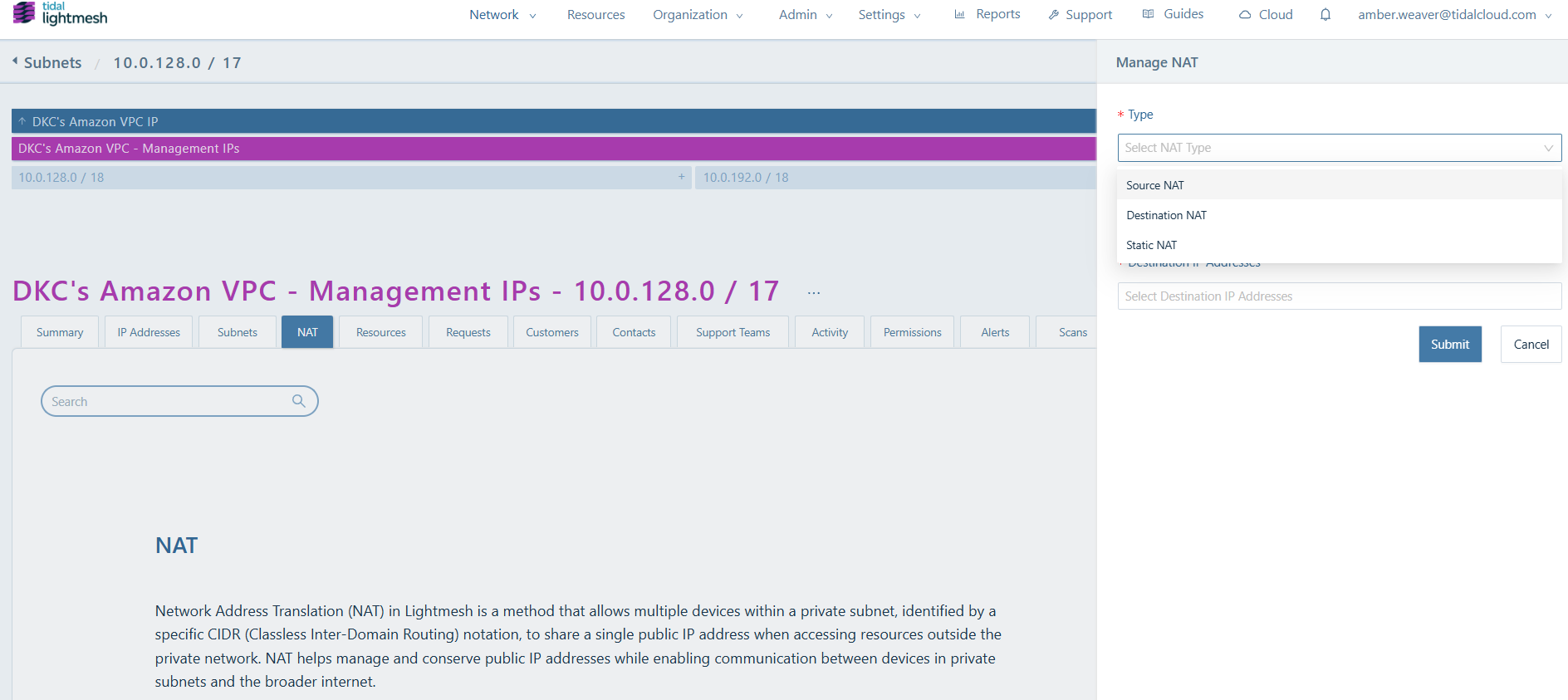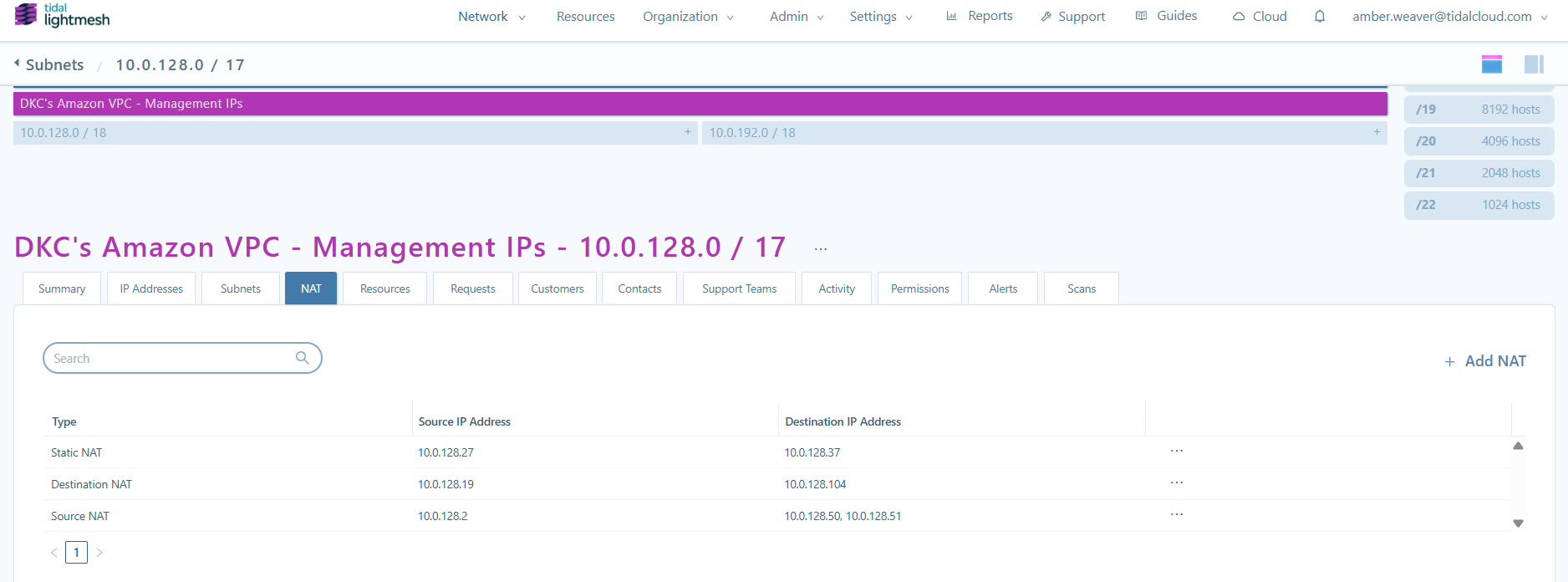Network Address Translation (NAT) is foundational in today’s enterprise and cloud networks, yet NAT documentation often remains an afterthought, managed in spreadsheets or skipped entirely. This creates unnecessary complexity, security blind spots, and wasted IP resources.
At LightMesh, we believe IP address management (IPAM) should include intuitive tools to track NAT configurations just as easily as subnets and IP assignments.
Why NAT Documentation Often Falls through the Cracks
NAT allows multiple devices in your private network to communicate with external networks using one or more public IP addresses. While it solves many networking problems, it also introduces new documentation challenges:
- Address Confusion: Difficulty knowing which private IPs map to which public ones across multiple environments
- Mapping Complexity: Troubleshooting becomes nearly impossible without records of source NAT (SNAT), destination NAT (DNAT), or static NAT configurations
- Abandoned Configurations: Decommissioned servers often leave unused NAT mappings that waste valuable public IP space
- Security Gaps: Incomplete records complicate traffic flow tracing during security incidents or compliance audits

How to configure NAT in LightMesh
How LightMesh IPAM Transforms Your NAT Management
LightMesh makes NAT documentation a core feature, not an afterthought:
1. Integrated Documentation
Document NAT configurations directly within your subnet planning or IP assignments, no more jumping between systems or needing to bother different firewall administrators to dump their config for you!
2. Complete NAT Coverage
Track all types of NAT relationships (SNAT, DNAT, static NAT) in one unified system, something many competing solutions don’t offer. LightMesh supports advanced configurations, like multiple endpoint DNATs, allowing you to capture more of your network’s complexity and share that knowledge across multiple teams.

Comprehensive NAT Visibility: Track SNAT, DNAT, and Static NAT in LightMesh
3. Cloud and Hybrid Network Support
Seamlessly manage NAT across on-premises infrastructure and cloud environments like AWS and Azure. This is increasingly important with overlapping addresses spaces and cloud sprawl.
The Real Benefits of Better NAT Documentation
Using LightMesh for NAT management delivers tangible benefits:
- Faster troubleshooting: Quickly identify connection issue sources
- Safer network changes: Make modifications without breaking existing connections
- Resource optimization: Identify and reclaim unused public IP addresses
- Compliance readiness: Meet security and audit requirements with complete records
Best Practices Made Easy with LightMesh
LightMesh simplifies NAT management best practices:
- Always record the purpose of each NAT mapping
- Tag the owner or responsible team for your subnet
- Use consistent naming conventions across projects
- Regularly audit mappings to clean up unused or outdated entries
Closing Thoughts: Why LightMesh Stands Apart
Unlike generic IPAM tools that treat NAT as an afterthought, LightMesh puts NAT documentation front and center in your workflow. This approach saves time, reduces errors, and ensures your network configurations are fully documented.
Ready to see how much easier NAT management can be? Start your free LightMesh trial to see every translation at a glance. No credit card required.

